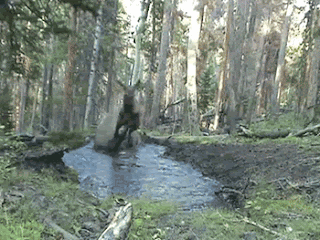Types of
Homeschooling
 |
| Figure 1- Your new teacher! |
Imagine this... you wake up every day in your cozy, warm bed and walk downstairs to your kitchen. Waiting for you is your mom with a big plate of pancakes, a cold glass of orange juice, and a stack of workbooks (Figure 1). Now, why would she have a stack of your workbooks? Because you are home schooled! Homeschooling is when your parent teaches you everything you would typically learn in a regular school, however, you are not taught by a teacher; you are taught by your mom or dad in the comfort of your own home (1)! 1,700,000 children just like you are being home schooled throughout the country (2). All 1,700,000 children are being home schooled in different ways. There are many different strategies and ways that parents can choose to home school you. Let's take a look at the four main types of homeschooling.
 |
| Figure 2- Goal Chart for the Formal Approach |
The Formal Approach
The formal approach is
the first strategy (3). If you are being home schooled through the formal approach you
will have many goals set for you to achieve (3)! Your mom or dad will do everything that they can to make sure you achieve those goals (3). Figure 2 shows a sample goal chart that you and your parents can use to set your goals. If one of the goals is for you to know all of your times tables by the next month, your mom and dad will place a lot of focus on those times tables. Everything you do will be directed so that you know those times tables in and out! However, the things you enjoy doing and your interests do not really have an effect on what you learn at home. Your parents want to put your education first, before your interests, to make sure you reach every goal (3).
The Demonstrative Approach
The demonstrative approach is
the next homeschooling strategy (3). Unlike the formal approach, the
demonstrative approach uses
your own fun experiences to help you learn (3). You have to get involved and get active with the demonstrative approach (3). Arts and crafts are often used in this creative way of homeschooling! Playing educational board games or puzzles with your mom or dad can play a part in your school day. Visual learners tend to enjoy this technique because they are able to see what they are learning, rather than hear it. So be ready to get up and get involved when using the demonstrative approach!
The Facilitative Approach
The facilitative approach is when your mom and dad give you more freedom (3). Your parents will guide you through your education, but they will not hold your hand the whole way through. Your mom and dad will support you in the decisions that you make, but they will not tell you what to do (3). Sounds great, huh? Think again! Everything you learn is geared so you that you know to make the right decisions! So, if you see someone being bullied at the park, you think back to the day that your parents taught you to go get an adult if you see someone in trouble! The facilitative approach helped you do the right thing, as your parents guided you along the way.
The Delegative Approach
The delegative approach is similar
to the facilitative approach. However,
the delegative approach has
even less guidance from your parents (3)! You are in charge of teaching yourself. This involves you reading a lot of textbooks and doing worksheet after worksheet by yourself. If you have a question, your parents will be there to answer it, but they will not be there every step of the way (3). This way of homeschooling is the least popular because your mom and dad want to be involved as much as they can in your education (3).
Throughout the four types of homeschooling, there is not one way that is stronger than the other. It all lies in the hands of your parents!
References
1. Lyman, I. (1998). What's behind the
growth in homeschooling?. USA
Today Magazine, 127(2640),64
2. Smith,
M. (2013, September 3). U.S. Department of Education: Homeschooling continues
to grow! HSLDA. Retrieved from
https://www.hslda.org/
3. McKeon, C. (2007, May 1). A mixed methods nested analysis of homeschooling
styles, instructional practices, and reading methodologies. Online Submission.
Hello my name is mom [Photograph]. (2015). Retrieved from http://nationalautismnetwork.com/uploads/blog-0622304001405097807.jpg
My goal chart [Photograph]. (2015). Retrieved from http://theschoolgardenllc.com/onlineshopping/images/851000.jpg












